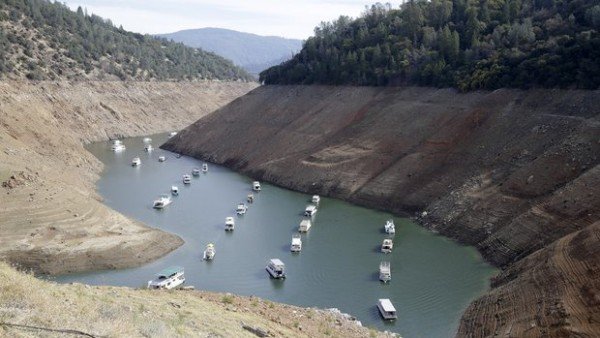California authorities issued a revised plan for the state’s first-ever mandatory water cuts, emphasizing the need for urgent action as summer looms.
The state regulators issued the new plan in response to numerous complaints on April 18.
California drought, which started in 2012, could persist for years, warned Felicia Marcus, chairwoman of the State Water Resources Control Board.
“We know we don’t know when it will end,” Felicia Marcus said as the board released a revised blueprint for enforcing Governor Jerry Brown’s executive order that Californians by next February reduce urban water use 25% compared with 2013 levels.
The board’s changes trimmed conservation targets for some communities with a track record of saving water, while slightly increasing the required cuts for the thirstiest cities.
Water suppliers that recorded the lowest residential per-capita water use in July, August and September of last year will have to cut only 8%. They include San Francisco, Santa Cruz and Seal Beach.
Communities with the highest per-capita numbers during that period, including Arcadia and Beverly Hills, have to chop consumption by 36%.
Los Angeles and Long Beach, which under the first draft of rules would have had to reduce use by 20%, were assigned a lower target of 16%.
The emergency proposal could change further before the board formally adopts it early next month, officials said. The state board will begin tracking compliance in July, when June’s use is reported, and will perform monthly checks on the more than 400 urban water suppliers that have to comply with the order.
Under the board proposal, regulators could nudge underachievers to impose more outdoor watering restrictions and change their water rates to encourage conservation. The board could also fine agencies up to $10,000 a day for noncompliance.
“Those who are using the most have the easiest way to go because [it is] primarily outdoor irrigation,” Felicia Marcus said.
“And that, frankly, has been our top priority here because that’s what you can reduce without undue economic or personal impact.”
State officials estimate that the 25% reduction in urban use would save about 1.3 million acre-feet of drinking water over the next nine months. That is more than twice what the entire city of Los Angeles uses in a year.
Jerry Brown released his executive order more than a year after he asked for a voluntary 20% drop in water use that most parts of the state failed to achieve. With a record-low snowpack, depleted reservoirs and the onset of another parched year, the governor on April 1 imposed the first statewide restrictions on water use in California history.
The preliminary framework for the regulations, released in April, was greeted by a flood of complaints from local water districts that grumbled that the cuts were unreasonable.
However, Jerry Brown, who appoints the five-member state water board, is standing firm.
The board responded to some of the criticisms contained in more than 250 comments by modifying parts of the proposal. It expanded the range of required cuts from four categories to nine, and assigned water districts to those tiers based on three months of water use last summer, rather than just September 2014.
Although Sacramento has reduced water consumption significantly in the last year, residential water use last summer was 146 gallons per person per day, compared with 91 gallons in Los Angeles.
The revised proposal would also allow urban districts in Southern California that deliver more than a fifth of their supplies to agriculture to subtract the farm water from their overall use, placing them in a less-stringent conservation tier.
